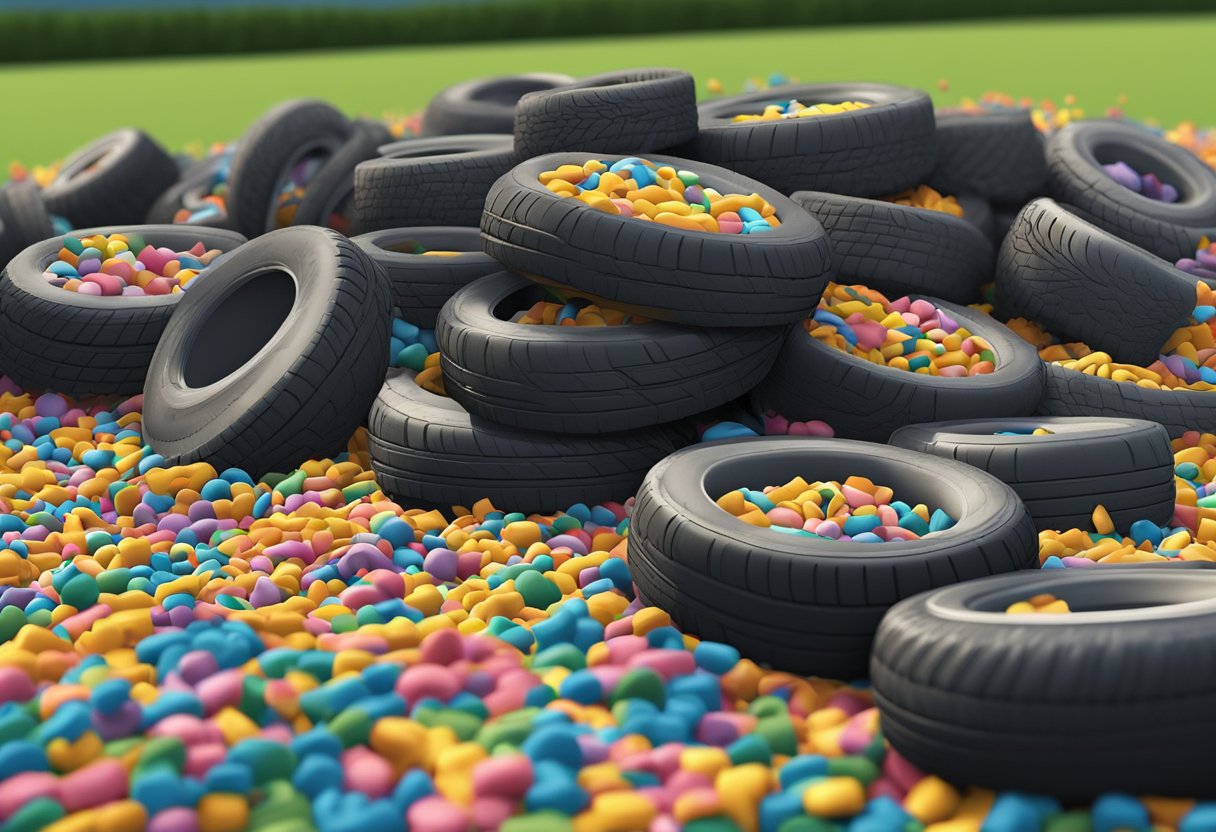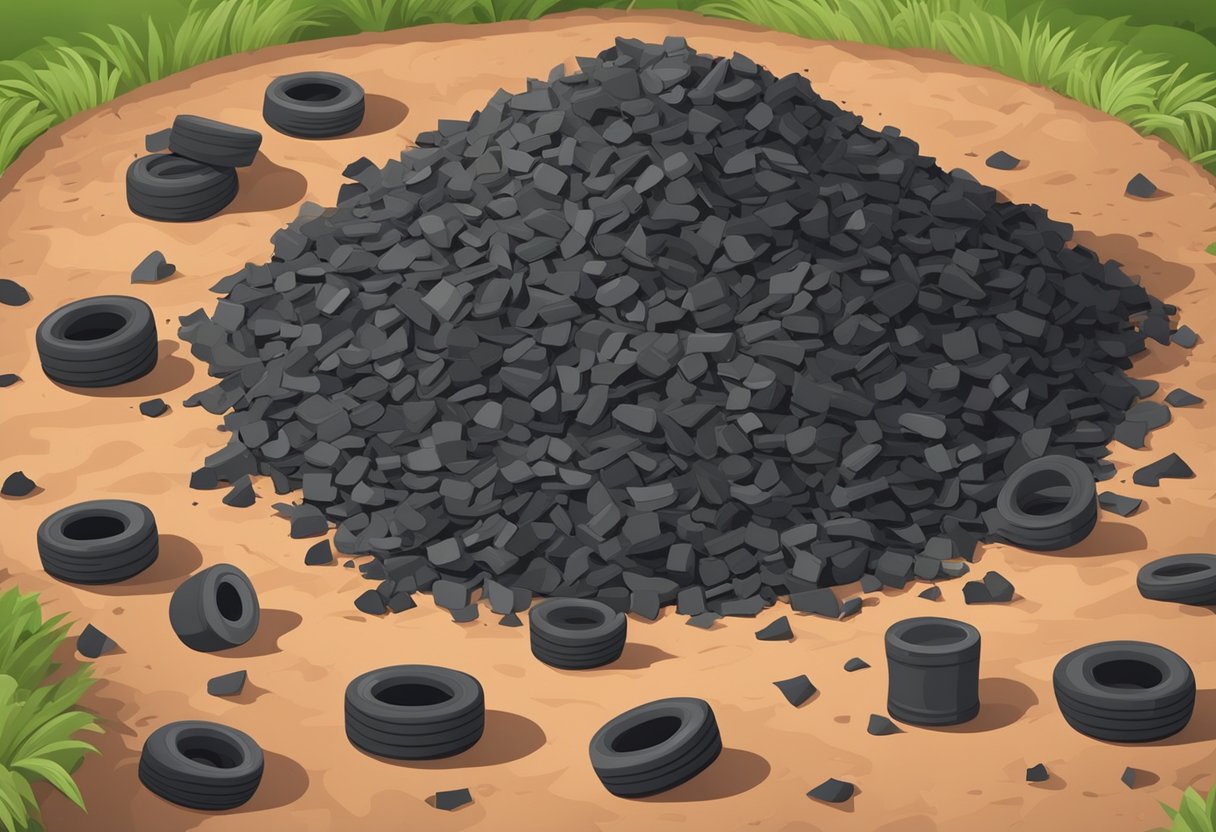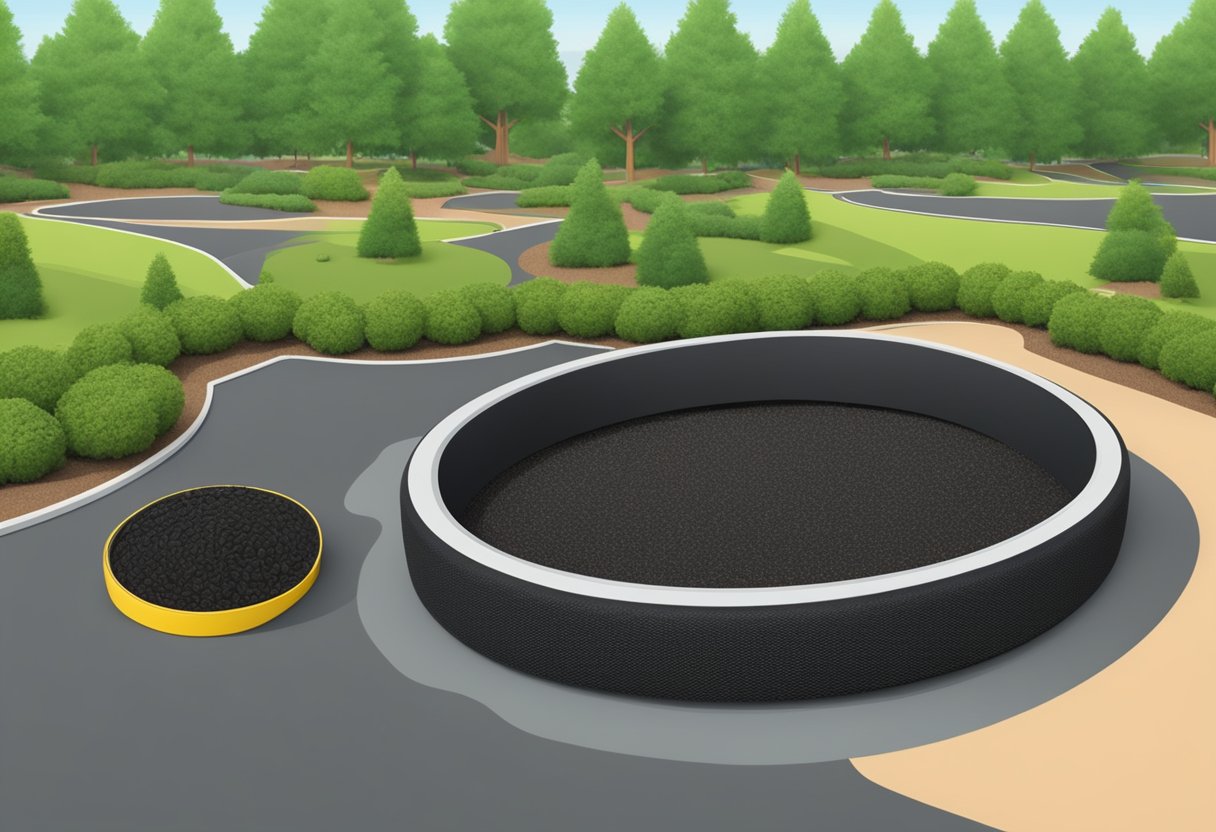Tire mulch is an innovative landscaping material derived from recycled rubber, primarily from vehicle tires. As advocates for environmental sustainability, we recognize the importance of repurposing waste materials to reduce our ecological footprint. Tire mulch exemplifies this approach, transforming discarded tires into a valuable resource for gardening and playground surfacing. Its durability stands out, with a life expectancy that can surpass traditional wood mulch, offering a longer-lasting alternative that keeps waste out of landfills.

In our experience, tire mulch provides several practical advantages. Its elasticity and shock absorbent properties enhance the safety of play areas, potentially reducing the likelihood of injuries from falls. Moreover, it does not decompose like organic mulch, so it doesn’t need to be replenished as frequently. It’s also noteworthy that tire mulch tends to be heavier and less prone to being blown away by wind or washed away by rain, contributing to its low-maintenance appeal.
However, we also know that the conversation surrounding tire mulch isn’t solely positive. Environmental concerns have been raised about potential chemical leaching and its impact on soil health and plant growth. As stewards of the environment and informed consumers, it is our responsibility to weigh these potential drawbacks against the benefits, ensuring that the use of tire mulch aligns with both our landscaping objectives and our ecological values.
Composition and Types of Tire Mulch

Tire mulch, also known as rubber mulch, is a durable, low-maintenance material made from recycled tires. We see it used in various settings such as playgrounds, landscaping, and roadways due to its beneficial properties.
Rubber Mulch Characteristics
Rubber mulch is composed predominantly of waste tire material. These tires, once stripped of metal and wire to ensure they are wire-free, are processed into either nuggets or shreds. The physical characteristics typically include high durability and a range of available colors. Its resilience makes it low-maintenance, and unlike wood mulch, rubber mulch is generally more resistant to pests and bugs.
Comparing Rubber and Wood Mulch
When considering rubber versus wood mulch, we note several differences. Rubber mulch tends to stay in place better than wood mulch, which can be advantageous in windy or high-traffic areas. Moreover, rubber mulch does not attract pests like termites and can last for years without decomposition. Wood mulch introduces organic material to the soil but can require more frequent replacement.
Sourcing and Manufacturing
The raw material for rubber mulch comes from end-of-life tires sourced from cars, trucks, and trailers. Recycling facilities then process these tires, ensuring they are metal-free before shredding. Suppliers may offer rubber mulch in bulk, often at wholesale prices, significantly reducing waste that would otherwise head to landfills.
Regulations and Standards
States and organizations like the Environmental Protection Agency (EPA) and the Consumer Product Safety Commission (CPSC) have set standards regarding rubber mulch quality. These regulations often involve the testing for heavy metals and other contaminants to ensure safety, especially in playground applications where children are in direct contact with the material.
Applications and Usage
We utilize rubber mulch in both residential and commercial settings. Its common uses include playground flooring due to its shock absorbency, which can reduce the risk of injury from falls. Landscape designers select rubber mulch for its aesthetic appeal and its ability to suppress weeds. Additionally, recycled tire mulch finds a use in rubber-modified asphalt, enhancing the quality of roadways.
Economic and Environmental Impact

Tire mulch, a material generated from recycled rubber tires, is gaining attention for its cost-effectiveness and reduced environmental impact. It presents itself as a sustainable option in landscaping, both in residential and commercial settings.
Cost-Effectiveness
We can purchase tire mulch at wholesale prices, which makes it an affordable option for landscaping compared to traditional materials. The product is low-maintenance due to its durability and longevity, saving us money on upkeep over time. Moreover, the recycling of tires for mulch helps divert them from landfills, potentially reducing the costs associated with waste management.
Environmental Considerations
Tire mulch is environmentally friendly as it’s made from recycled rubber that might otherwise contribute to the growing volume of waste in landfills. Utilizing recycled tires in landscaping prevents the ecological harm from tire waste, like fire hazards and pollution. Recycling processes also reduce the need for new materials, conserving natural resources.
Health and Safety Factors
Safety is paramount, especially when tire mulch is used in playgrounds. The Consumer Product Safety Commission and the EPA have studied tire mulch, examining its impact on health. Although it provides cushioning and reduces injury risks in playgrounds, concerns have been raised about the presence of heavy metals and other contaminants. We ensure that our playground rubber mulch complies with the relevant safety standards to minimize any health risks.